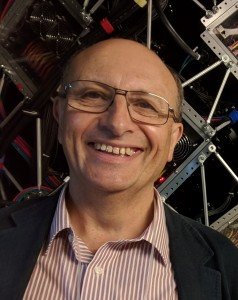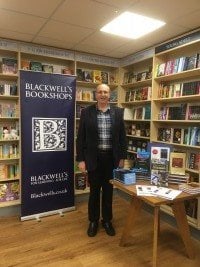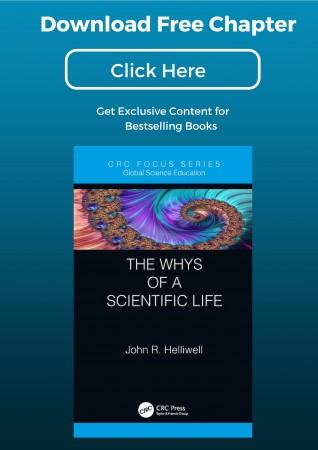CRC Press is pleased to share with you our author Q&A session with John R. Helliwell, author of The Whys of a Scientific Life, Skills for a Scientific Life, Perspectives in Crystallography.

The Whys of a Scientific Life, 1st Edition
Author(s): John R. Helliwell
Price: $74.95
Cat. #: K399493
ISBN: 9781138389793
Publication Date: October 11, 2018
Binding: Hardback

Skills for a Scientific Life, 1st Edition
Author(s): John R. Helliwell
Price: $220.00
Cat. #: K29262
ISBN: 9781498768757
Publication Date: December 06, 2016
Binding: Hardback

Perspectives in Crystallography, 1st Edition
Author(s): John R. Helliwell
Price: $220.00
Cat. #: K26227
ISBN: 9781498732109
Publication Date: November 16, 2015
Binding: Hardback
Q&A with John R. Helliwell
Congratulations on the publication of your book The Whys of a Scientific Life. What do you want your audience to take away from the book?
Thank you. Firstly, let’s define the audiences I am aiming at. The understanding of why scientists do what they do should and does interest several audiences namely the Public, Politicians, School children and their parents and last but not least scientists themselves should consider these topics.
What inspired you both to put this book together?
CRC Press’s Hilary LaFoe responded very positively to my ideas for a new book. Specifically, she suggested that CRC Press had a new book series on Global Science Education. I thought the concept for this was excellent. I also thought that an excellent place to start would be The Whys of a Scientific Life, the book title in my mind. This title arose because my previous book on Skills for a Scientific Life had chapters nearly all defined as “How to….”. So, a complementary title would now be “Why”. Nearly every one of my chapter titles is “Why….”.
Why is this book relevant to present day?
My book is relevant to people of all ages. Also it is relevant to scientists today where they are more and more exhorted to explain their research and its wider impacts..
How do you think your field is evolving today?
Science policy is evolving because Governments and Funding Agencies seek to direct the research that is done to be more and more obviously for the good of Society. Such a policy seems laudable, and in some ways is, but some of the most impactful discoveries in science were not immediately obvious as having applications. I explore in my book these perspectives.
What are the main developments in research that you are seeing in your subject area of expertise?
There are many and I do give some practical examples of my own in my new book which illustrate the general discussion I am elaborating on. I also refer everyone to my recent book Perspectives in Crystallography, also published by CRC Press in 2015, where you can see a detailed explanation, which answers your question.
What makes your book stand out from its competitors?
I genuinely believe my book has no competitors with its combination of modern-day policy matters, careers relevance and philosophy of science in the context of modern developments especially the hugely improved scope for primary i.e. raw data archiving arriving finally at objectivity.
Is there one piece of research included in the book which surprised you or challenged your previous understanding of the topic?
The pace of research and development taken as a whole outstrips an individual’s vision and imagination, including mine. It is this cooperative enterprise overall that science is. I mean ‘overall’ to allow for the fact that individuals can compete fiercely and not cooperatively.
What did you enjoy about writing this book?
I especially enjoyed researching each of the “Why” chapter topics and sometimes being moved to quote some policy matter announcements.
About the Author
What first attracted you to this topic as an area of study?
When I retired from my full-time academic post I had chance to explore in more depth topics that have always interested me.
Tell us an unusual fact about yourself and your teaching or writing style?
I imagine it is unusual for me to have such a diverse combination of experience teaching physicists, chemists and biochemists, to have run a very active research laboratory, to have designed and built important instruments and developed new methods in my field and to have had a senior role in the scientific civil service.
What advice would you give to an aspiring researcher in your field?
As the back cover to “The Whys of a Scientific Life” elaborates scientists are driven by their curiosity but they do of course work within a complex environment. That is a challenging mix to try and navigate. So, I hope my book is of help to scientists too.
Do you have plans for future book series? What’s next in the pipeline for you?
Next up I have chance i.e. approved by CRC Press to further support this important initiative of the Book Series on Global Science Education with my next book “The Whats of a Scientific Life”.
What is the last book you read (non-academic)?
“One, two buckle my shoe” by Agatha Christie. It is truly a “Classic Hercule Poirot mystery” as the front cover of the book states.
What do you like about publishing with CRC Press? What has encouraged you to continue working with us?
I had been very happy working with Taylor and Francis on Crystallography Reviews. This led to my first two books being with CRC Press, and now also this third one. I find them very professional and responsive e.g. sharing second proofs.
“Who was/is your role model? Who inspired you to pursue a career in...?”
I found the research work of Max Perutz on using X-ray crystallography to understand the workings of the oxygen transport protein haemoglobin inspiring. This was during my biophysics option course at the University of York when I did my physics degree. I didn’t realise then that I would spend so much of my career working on instrumentation and methods developments, in effect that X-ray crystallography was far from perfect. Its scope is now transformed out of all recognition. My ideas, and frustration with the state of the art of instrumentation in 1975, led me to have discussions with Dorothy Hodgkin, also Nobel Prize winner like Max Perutz, and which also profoundly changed my research career.
Anything else you would like to add?
Interested readers can turn to my audio interviews on my scientific career with the British Library and held in their archives. The weblink is
https://sounds.bl.uk/Oral-history/Science/021M-C1379X0122XX-0001V0





